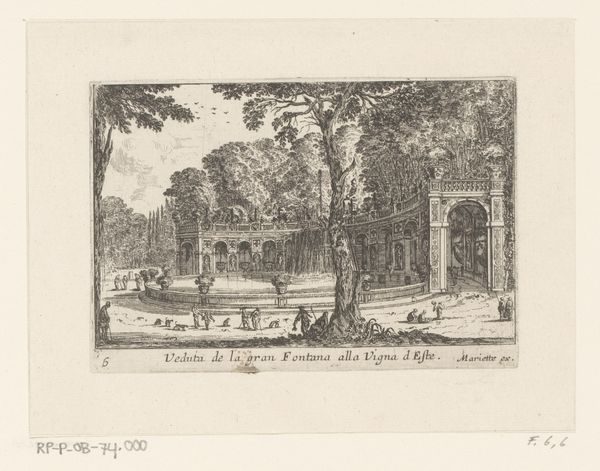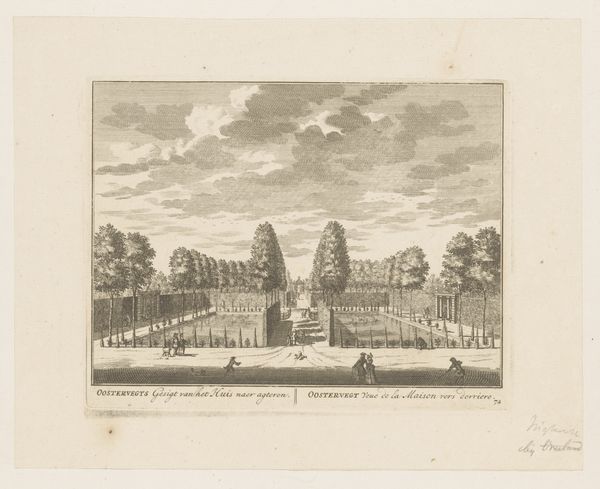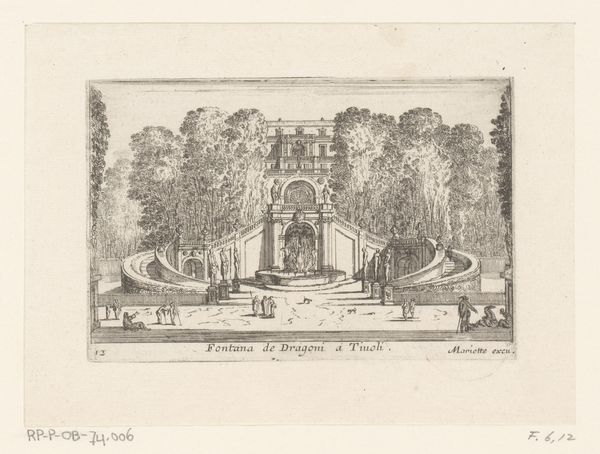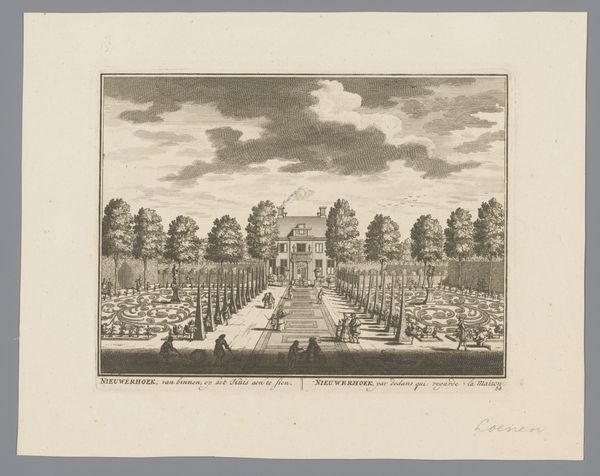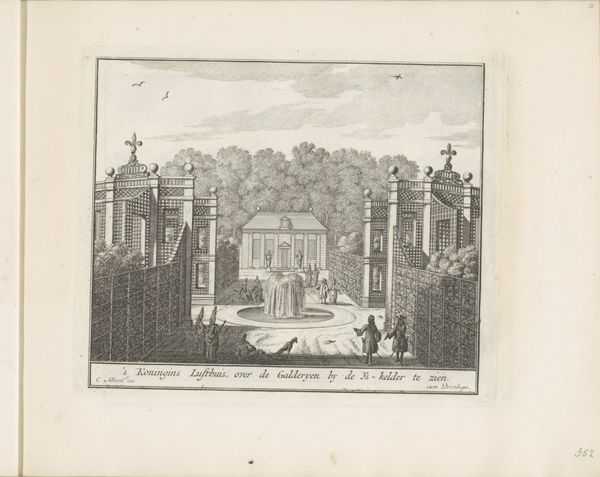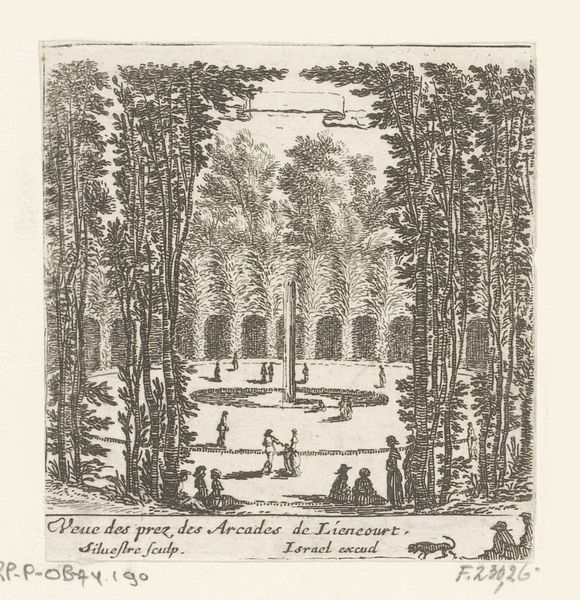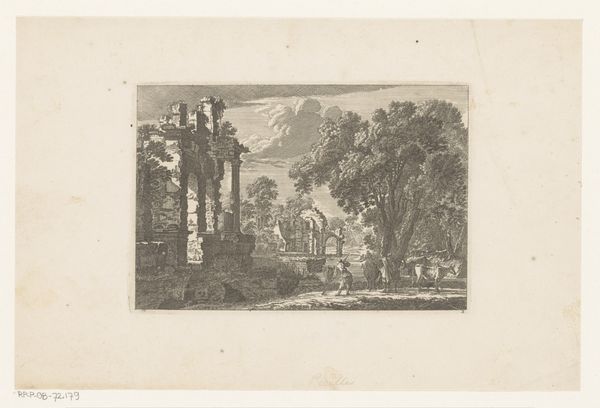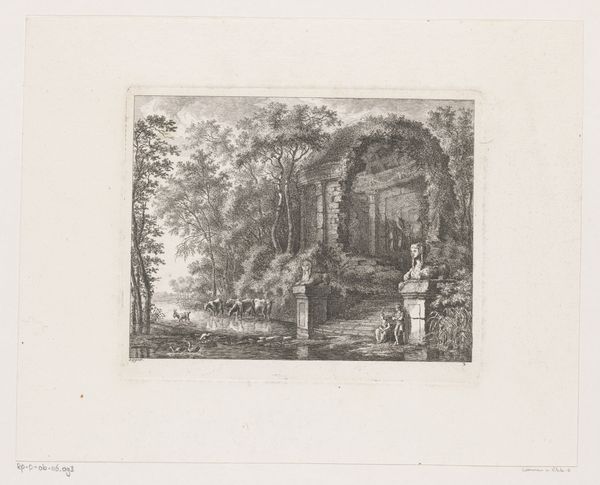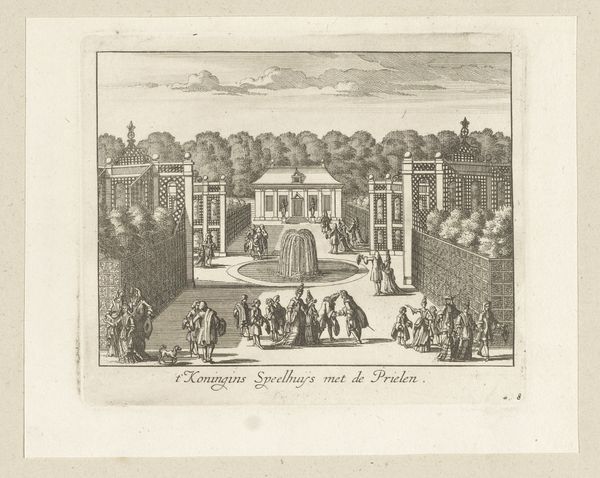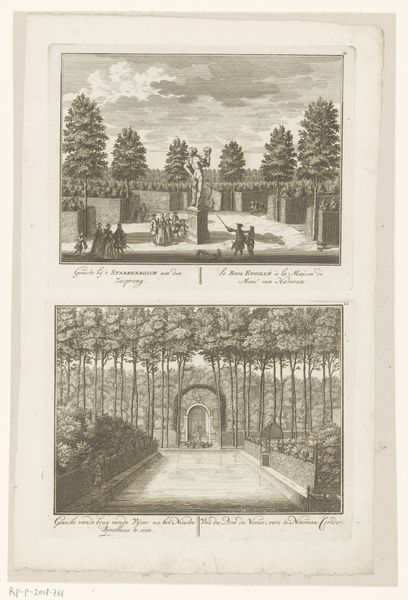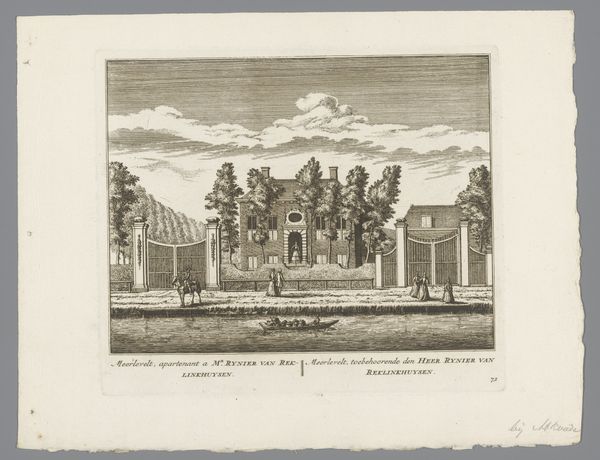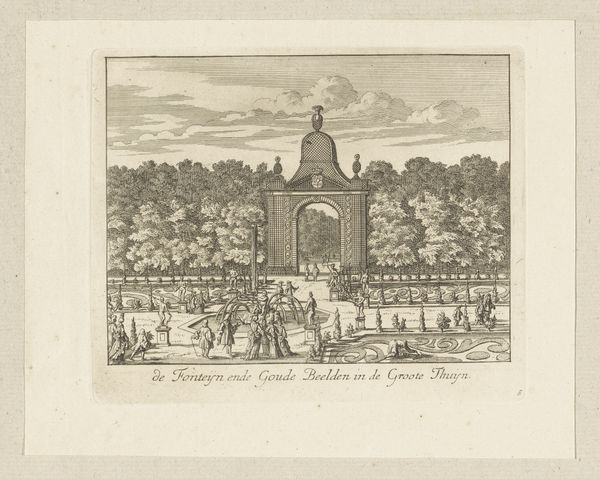
print, etching
#
baroque
# print
#
etching
#
landscape
#
cityscape
Dimensions: height 81 mm, width 121 mm
Copyright: Rijks Museum: Open Domain
Curator: Here we have Israel Silvestre’s etching, "View of the Fountain at Villa Aldobrandini," created in 1646. The print captures a lively scene at one of the most magnificent villas of its time. Editor: It's astonishingly detailed, given the scale and medium. The lines are so delicate, almost like a silverpoint drawing. There's a sort of busy, celebratory atmosphere—though somewhat ordered, as only the Baroque knows how. Curator: Silvestre was celebrated for these landscape prints. What’s interesting is how this kind of imagery served political purposes, representing power. These grand estates of elite families proclaimed not only wealth, but their refined tastes and their place in society. Editor: The etching itself serves a purpose. Multiple impressions would have been printed; how was the labor distributed for something like this? And to whom were these prints accessible? It probably tells us much about the audience for, and appreciation of, idealized landscapes at the time. Curator: Indeed. These were not mass produced in the way we might think today. Consider the role of galleries, art dealers, and patronage. The market and access shaped both the production of the image and how it was disseminated and understood. This print would have found its place within a specific cultural and economic framework. Editor: The architectural elements—the statuary, the balustrades, and the cascading water—become symbols of control and artifice. And I love thinking about the etching process itself. How Silvestre carefully etched into the metal, replicating this scene, and in a way also manipulating its meaning. The print itself becomes a curated version of reality, doesn't it? Curator: Precisely! The selection of perspective, the details included or excluded – these are deliberate choices by the artist, who’s responding to the cultural norms of his era. It's fascinating to think about how this seemingly simple image offers a portal into the socio-political structures of 17th-century Rome. Editor: Absolutely. When you start to unpack the layers of intention, production, and reception, an unassuming etching reveals itself to be so rich and deeply interwoven with the values of its time. Curator: Precisely, and a tool used for social purposes.
Comments
No comments
Be the first to comment and join the conversation on the ultimate creative platform.
